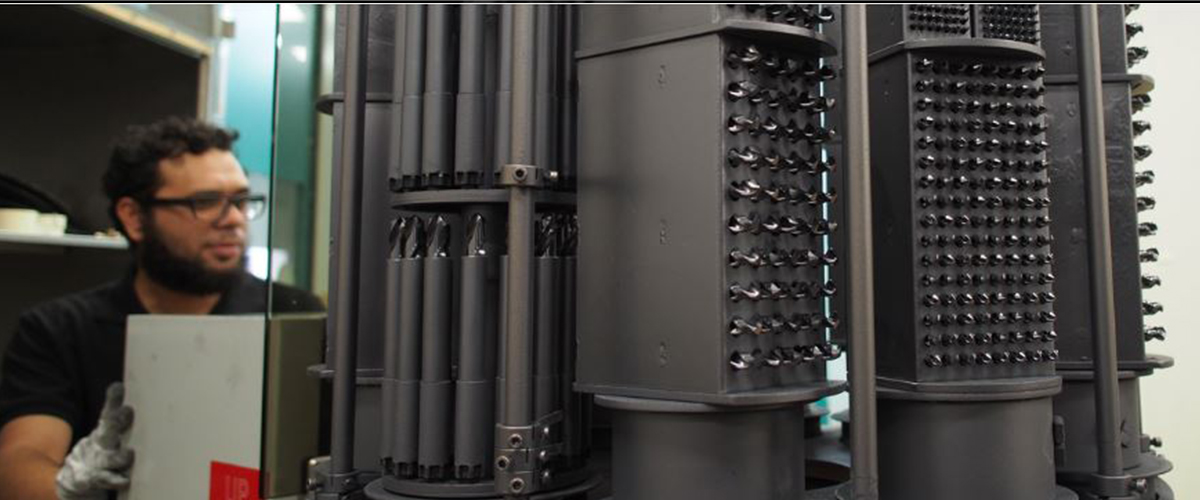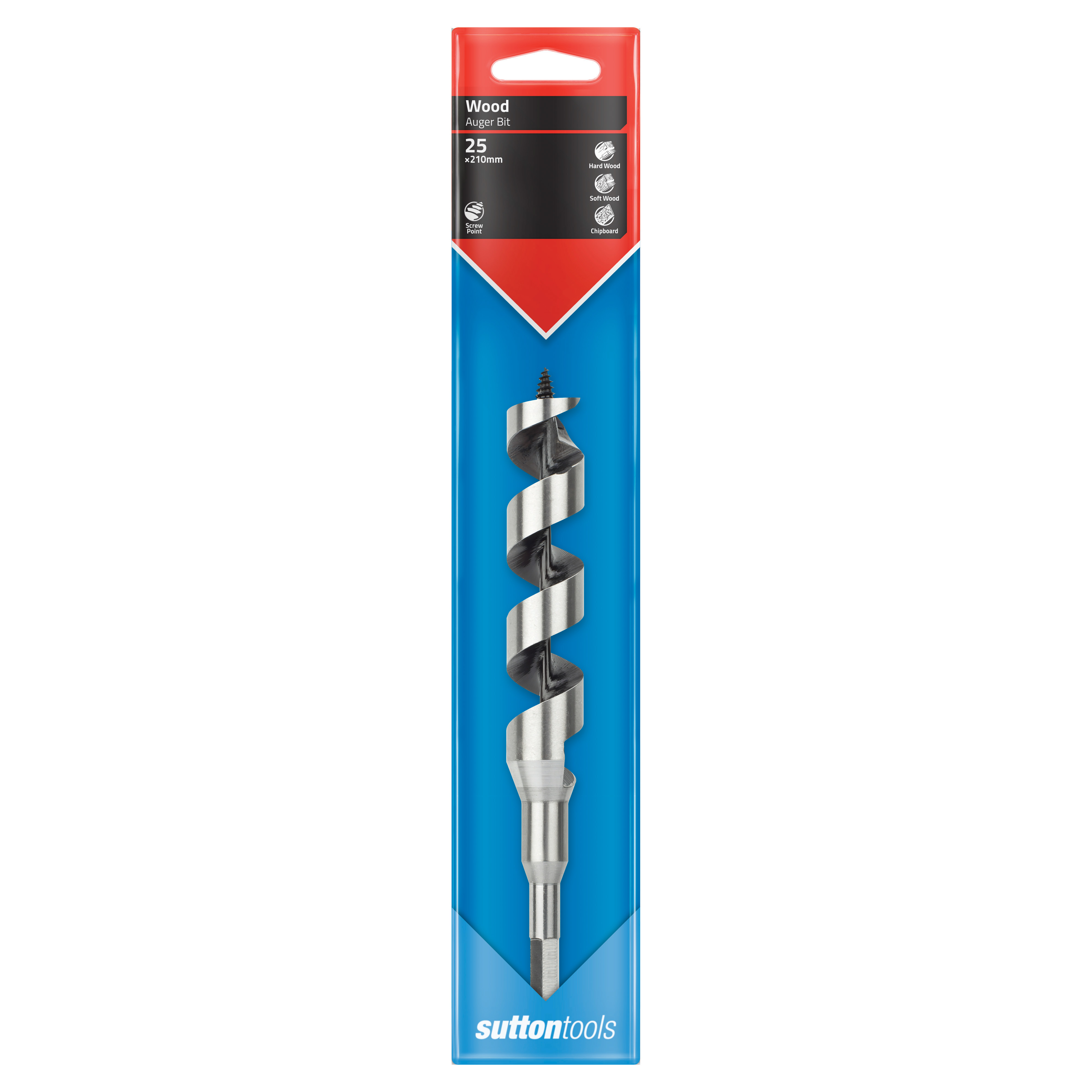How PVD Coating Improves Tool Performance and Reduces Your Process Costs
 Dr Steve Dowey, Technology Manager at Sutton Tools, discusses the benefits of PVD coating of industrial cutting tools, and how pre and post-coating treatment can further enhance the performance of manufacturing processes to reduce cost of goods.
Dr Steve Dowey, Technology Manager at Sutton Tools, discusses the benefits of PVD coating of industrial cutting tools, and how pre and post-coating treatment can further enhance the performance of manufacturing processes to reduce cost of goods.
Working with our manufacturing customers, we understand that what they think they really need from their cutting tools is what is known as a life of intrinsic reliability. (If you spend time with Weibull plots, and don’t we all?) This is a really nice place to be, as you pretty much know that your cutting tool is not going to fail. That’s because you control the load on the tool and the tool wears up to the point where its strength is just under its load. The life of tools is important – especially reliable life – to avoid time lost and excessive wear.
However, more important than tool life is performance. Allowing them to work faster, harder, hotter and reaching higher metal removal rates (MRR) is where there’s scope to reduce the cost of goods. Especially when using CNC machines, reducing the time it takes to make goods will reduce your overall manufacturing costs. We tend to focus on tool life because it’s much easier to measure. Improving measured life typically lets us up the speed and depth of cut and increase MRR for the same (or ideally better) life than we previously accepted.
How PVD coating can improve performance
It’s common knowledge in the manufacturing industry that post-manufacture coating of cutting tools makes them perform better in many applications. They can also be re-serviced by re-grinding and re-coating multiple times to extend their useful life – and sometimes to re-purpose them for a different application or material.
What’s not common knowledge is that some coatings can make performance worse, or that the benefits of coatings can be greatly enhanced by improving the cutting tool rather than focusing on the coating. Sometimes it’s even possible (in the case of punches, for example) for a coating to make absolutely no statistical difference to tool life, until you polish the tool tip prior to coating. Then you get some great outcomes but the resulting tool failure by fatigue, instead of wear out. That causes other issues for the end user who has never had to deal with failure distributions with a long tail and thinks that now there may be a quality issue with so called variance. Remember: not all failure is normally distributed.
Advanced technology from Oerlikon Balzers offers many different Physical Vapour Deposition (PVD) coating options that can potentially increase tool life by orders of magnitude, compared to uncoated tools.
PVD coating enhances tool performance by increasing the wear and oxidisation resistance of the tool and coating system. This enables either longer or faster operation, or longer and faster operation, so cutting tools maintain their strength and therefore the support for their edges and wear faces for longer.
So, if you improve your tool life, should you stop there? I suggest that you should forget about the increased lifetime. Instead, use the benefit to increase your productivity. You can use the improved strength of your tool to make products more quickly, therefore having an impact on your bottom line.
So, given we’ve got probably the best PVD coating machine in the world at our Melbourne factory, we’re continuously working on ways to raise the underlying quality of our industrial tools to meet and take best advantage of this innovative technology. If you are looking to use PVD coatings on your products, you should also look at your finish and edge prep to get the best out of PVD yourself.
Pre- and post-coating treatment can also make a difference
Measuring the life of a tool is relatively easy in a testing facility. In one example I’ve written of, a particular uncoated tool might achieve an average 600 punches before it needs regrinding or replacing, whereas the same tool PVD-coated might typically accomplish over a thousand. Measuring performance is more difficult and is often best conducted in the unique environment of our customers’ applications.
However, through extensive testing in our R&D facility, we’ve established that the performance of tools can also be enhanced by treating them before and/or after coating.
Pre-treatment of tools can be critical, because PVD coating cannot fill a rough surface. Smoothing rough surfaces to remove blemishes and burrs prior to coating will typically result in a better final product.
Post-treatment of coated tools removes any surface defects created during the coating process. This is common practice in arc-based processes – where ‘macros’ in the coating results from some form of seed particle, such as dust on the tool, or a large droplet ejected from the cathode material. Sputter processes (with poorer intrinsic film adhesion) and electron beam evaporation based coatings have intrinsically smoother coatings – though not defect free.
This all leads to what we’ve also shown through extensive testing. Post-polishing of PVD-processed tools can benefit from an optimum form of surface preparation – not only in terms of tactile feel, but in their subsequent performance.
In summary…
PVD coating is a highly advanced technology that optimises the performance of tools for a range of applications and working harder materials. The process can be further enhanced by pre- and post-coating treatment, and in my next article I’ll discuss the importance of edge preparation using Tiny Design.
Every tool and its application are different – so, if you want to improve productivity and reduce your costs, it’s important to fully understand and consider your coating options for maximising the performance of your manufacturing processes.
Please contact us if you’d like to know more about our PVD coating and re-grinding services – or need expert advice on any other tool performance challenges.
About the Author
Steve Dowey
Dr Steve Dowey has been Technology Manager at Sutton Tools since 2010. From 2003 he was Technical Manager at Surface Coatings Technology, a Sutton Tools subsidiary. He has a Doctorate in Engineering Design and Manufacture (Advanced on-line and off-line process control for Surface-Engineered Applications) and deep experience in PC- and SBC-based DAQ systems.


